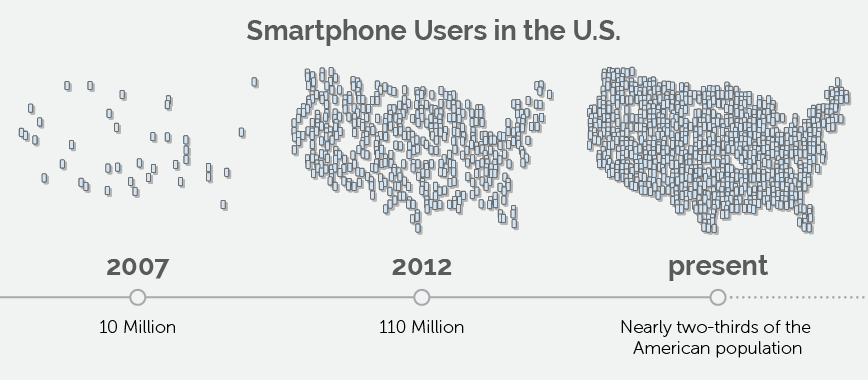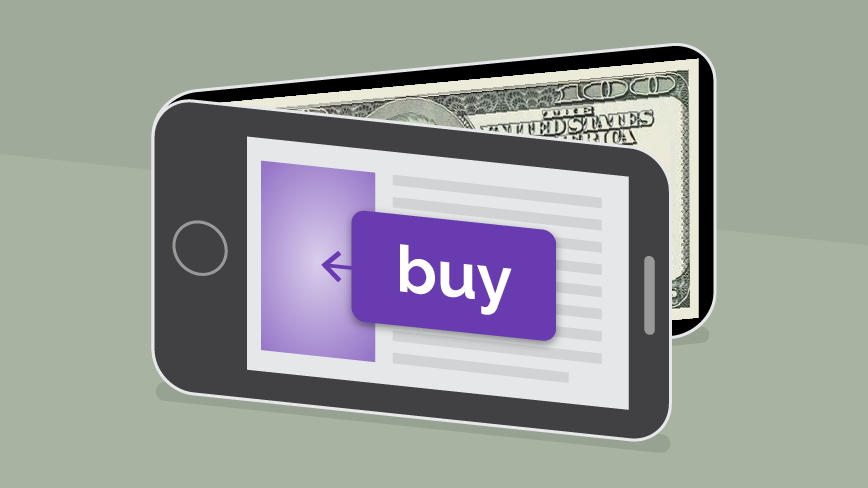While much of the innovation in the 20th century focused on electronics, the past decade has seen a shift toward information – how it is shared, stored and distributed.
Today, most customers are looking for mobile products that link to social media channels or help with tasks, such as paying for coffee with the flick of a wrist.
With the Internet of Things on the horizon, connectedness will entrench itself deeper into the way we interact and conduct business. Marketers should look for opportunities coming from rich data sources, which could be smartphones, tablets to even that fresh-roasted cup of coffee underneath the smart coffee maker.
Where We Are Now and How We Got Here
Smartphone users increased rapidly from 10 million US device owners in 2007 to 110 million in 2012. Now, nearly two-thirds of the American population has a smartphone, according to Pew Research.

As the acceleration of smart device ownership picked up, so did the rate of data consumption. Companies scrambled to not only find ways to facilitate mobile traffic, but also to store the data produced by device interactions. Publications like Business Insider pegged the growth of data and the demand for ways to access and process it as a defining trend in the upcoming decades.
How Data Is Driving Mobile Marketing Today

Forbes writer Steve Olenski identified these mobile marketing trends in a recent post:
- Mobile wallets are the hot topic among major retailers, who are trying to harness the potential of quick pay platforms like Google Wallet and Apple’s Passport. Brands like Pep Boys and Men’s Warehouse are eager to integrate the technology into their checkout system, especially since coupons from email marketing or social media posts can be attached to wallet systems, greatly increasing their odds of getting used.
- Mobile is becoming more of a viable sales platform by the day since content marketing and branded apps can give users convenient access to the information they need anywhere at any time, even in the store.
- Mobile advertising becomes more seamless as brands move away from traditional ad techniques towards formats like native content or in-app experiences. We recently covered what this emergence of native advertising truly means for brands. But for mobile, it means the consumer can be rewarded for performing desired actions with virtual goods, virtual currency or even access to exclusive content or services.
Keeping That Eye on the Horizon
The most exciting thing about mobile marketing developments today are the capabilities they hint at for tomorrow. Gamification of mobile advertising coupled with the Internet of Things opens the doors for all sorts of creative cross promotions that could see you brewing 10 cups of coffee a week to unlock a free donut from your favorite chain.
Mobile wallets move more information into a convenient package, someday maybe letting users load products on their phone so they can pay for them and pick them up at the register in one smooth motion. Beacons can create dynamic in-store experiences that meld the excitement of online browsing with the immediacy of physical retail.
In true form to the past quarter century, prospects like these will be driven by information. Data will shape the way we interact with customers and offer them new goods, services or experiences. Information sharing between devices and platforms will eventually create seamless experiences where a mobile device is a powerful tool in the arsenal of both consumers and brands alike.

